The Pentagon and Lockheed Martin have finalised a $34 billion deal for the next three lots of F-35 Joint Strike Fighters. The deal also sees the cost of all three F-35 variants drop with the F-35A reaching below $80 million.
The $34 billion deal announced by US Undersecretary of Defense for Acquisition and Sustainment Ellen Lord is for the delivery of 478 F-35s including 149 for Lot 12, 160 for Lot 13 and 169 for Lot 14.
According to a contract notice, work will be performed in Fort Worth, Texas (57%); El Segundo, California (14%); Warton, United Kingdom (9%); Cameri, Italy (4%); Orlando, Florida (4%); Nashua, New Hampshire (3%); Baltimore, Maryland (3%); San Diego, California (2%); Nagoya, Japan (2%); and various locations outside the continental U.S. (2%).
291 of the jets are for the US, 127 are for F-35 international partners and 60 are for FMS customers. A total of 351 will be the F-35A conventional take-off and landing variant, 86 will be the F-35B short take-off and vertical landing variant, and 41 will be the F-35C aircraft carrier-launched, according to Lockheed Martin.
Under the terms of the agreement, the per unit recurring flyaway cost of the F-35A will reach less than $80 million by Lot 13, one lot sooner than planned.
The F-35A will be $82.4 million for Lot 12, $79.2 million for Lot 13, and $77.9 million for Lot 14, according to Lockheed. For Lots 12, 13 and 14 the F-35B will cost $108 million, $104.8 million and $101.3 million, respectively and the F-35C will cost $103.1 million, $98.1 million and $94.4 million respectively.
“With smart acquisition strategies, strong government-industry partnership and a relentless focus on quality and cost reduction, the F-35 enterprise has successfully reduced procurement costs of the fifth- generation F-35 to equal or less than fourth-generation legacy aircraft” Greg Ulmer, F-35 program vice president and general manager at Lockheed, said in a statement.


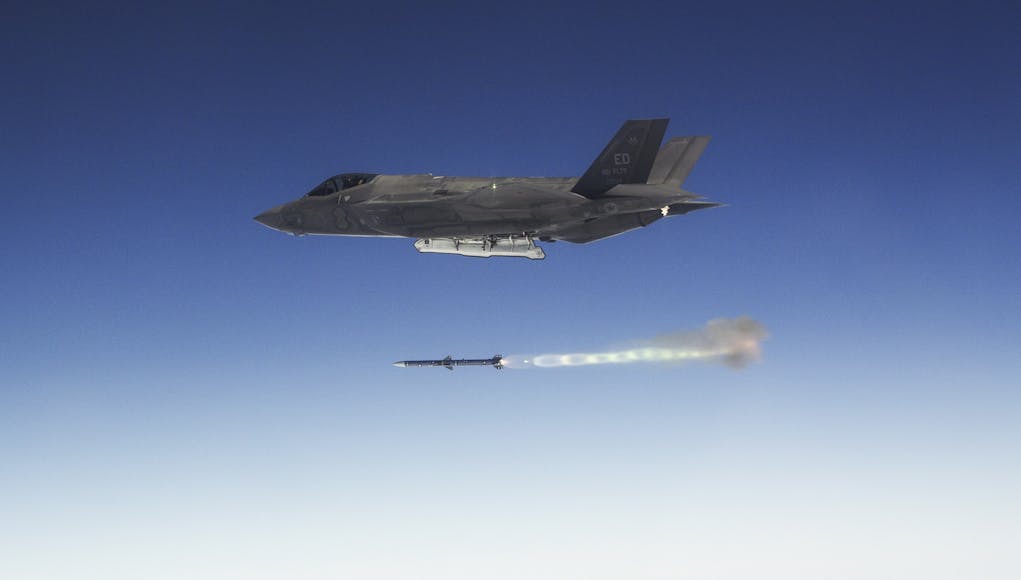


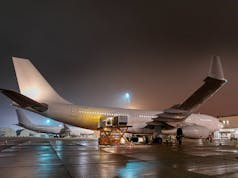



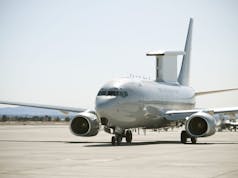

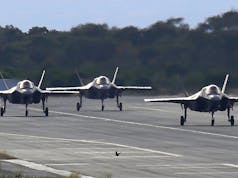
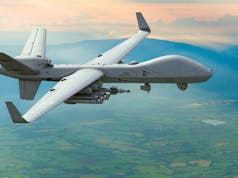

The drop in the ‘A’ variant costs may be too tempting to ignore in regard to the RAF’s interest in the plane? I can see real advantages in buying at least two squadrons in the future, to allow for more cost-efficient management of the entire UK F35 fleet.
I have no problem with MoD buying F35A varkants8, as long as these are in addition to the 138 agreed before.
Seeing as with the 138 we would likely only have 80-90 planes I our inventory at any one time and out of those, only 4 operational squadrons totalling 48 jets, we cant afford to reduce any of those planes’ capability to conventional airfield only and not carrier.
The breakdown or disposition of planes will I’m sure will be addressed as the planes reach full fleet numbers? If as we are told the F35 has been streamlined in terms of servicing and maintenance, there must be an opportunity to speed up this element of the plane’s management? One attractive attribute about the ‘A’ variant is its simplicity when compared with the ‘B’ and this factor would enhance plane availability, thus addressing your concerns?
Here here here!!!!!!!
I think the B variant is a more flexible aircraft for both the RAF and Navy. The A is not significantly better but is far less flexible. For instance the B gives the RAF a choice of deployment options as it can go to full bases or operate from places that are not airfields. It also means they can deploy from ships etc. Also the A variant can not currently refuel from our aircraft as we made the unbelievable decision to not fit booms to our Voyagers in the dumb contract we signed!
Yes quite the need is to forget about land based only. It simply doesn’t make sense anymore for the UK and its island dependencies to have land based only combat aircraft. If the RAF had had Sea Furies in 1945 they would have seen combat in Korea as well.
The problem with a split buy of A and B variants is the buy rate. We are looking at 138 over the life of the programme, we won’t see all in service at once. By purchasing some F35As we will be taking from the pool available to the carrier groups, possibly even ensuring we cannot deploy both with sufficient aircraft. That assumes of course it is ever the intention for both to sail, but you would hope we could in the event of conflict.
Without more funding and an increase in numbers I can’t see how we could have sufficient numbers to field both types, not without all 138 being in service at once.
To be honest if we buy A variants from the existing 138 we probably wouldn’t be able to fill one of the carriers, let alone both.
Personally I think we should accelerate the buy rate so we have all 138 in stock in service at the same time. That could field 7 squadrons in theory.
– 7 combat squadrons of 12 each: 84 planes
– 1 OCU: 18 planes
– Spares: 36
Would mean 1/3 stock of spares. This is with using just the B variant.
‘we probably wouldn’t be able to fill one of the carriers’
Of course not; for whatever reason that’s the whole point.
My concern has always been we will not buy the full 138 but only buy 60 .
The treasury has form in promising to fund 12 and then only funding 6.
The reason we are only getting 8 type 26 is because the treasury will not realease the funds so the build time has to be stretched to keep the skills in yards increasing the unit cost .
BAe told the defence select committee if the treasury realeased the 8 billion over 5 years then 11 type 26 could have been brought but the treasury has insisted on a ten year time frame adding costs to each hull .
Typical treasury save a £ today to waste £5 tomorrow.
I’m sure you are correct about the threat to the final numbers. However, the MOD is probably signed up to purchase at least a 100 as the total programme costs and manufacturing projections, are all part of the cost reduction exercise? The ‘A’ variant cost reduction will be a tempting proposition going forward, and depending on the political complexion of the next British Government it may be too inviting to dismiss? The RAF is officially lobbing the MOD for the ‘A’ and that will be a difficult body to ignore. To add fuel to the fire, the more the ‘A’ costs fall the greater the chance it will be bought by the MOD.
It’s never been the plan to deploy both carriers at the same time with 36 F35’s on each vessel. Having two ships means we have one available 365 days a year, working around the maintenance and refit schedule. There will be times both are available, with the 2nd carrier being used as a LPH with the ability to carry a small number of F35’s alongside the helicopters. 24 F35’s will be the normal deployed number, pushing up to 36 or 40 under surge conditions.
Both deployed at the same time is part of the carrier modus Operandi in the case of a critical situation. Wether two carrier groups could be achieved is another question?
If there was a large scale war or emergency why not have two operational Carriers? Just having two squadrons of A variants because they are marginally quicker or whatever makes no sense at all.
Please please please don’t split buy. B is the way all the way, it would give us a crushing superiority in carrier air fleet size.
So this makes the F35 (All variants) cheaper than a Typhoon.
My view is we need a minimal operational force of 96 F35B’s to allow us to surge to 2 carriers. There is little point in having strategic platforms if they are not fully loaded, as this becomes a vanity project, so 138 over the lifetime sounds about right.
We should not order the A variant at all, as Tempest will be our version of that so for me it is an outright choice Tempest or F35A. We simply cant afford both Tempest and F35A
I would also urge everyone to stick to the strategy.
The order for F35B is for carrier regeneration (it is a replacement for the harrier fleet)
The order for tempest is the replacement for Typhoon, which has itself replaced Tornado and is a merging of capability.
I have no problem with this approach of standardising, but we must stick to the overall strategy and not dilute it with a split buy. F35A does not give us enough over the F35B to justify a small buy, we would be better to accelerate Tempest instead.
F35B is a massive step up in capability and we should embrace it fully and then move on to Tempest.
Am I confident we will stick to the strategy – No, and I think this is a strategic mistake.
To be honest we could do it with 84, as long as that is 84 operational squadron aircraft (so not including OCU or spares.
This is how I see it could break down.
– 7 operational squadrons: 84 planes (4 FAA, 3 RAF)
– 1 OCU: 18 planes (a shared OCU between FAA and RAF)
– 36 spare airframes.
Adds up to the 138 airframes. If only the treasury would allocate the funds and stop stretching the buy rate over decades to pretend its saving money.
We can Steve – but I believe a squadron should be 16 aircraft and that the CVF should have 32 as standard as 48 in surge. I also think out of the 96 we will have an availability of 64 at any point with the other being in some form of maintenance.
I broadly agree that 138 is the right number and want to ensure that the overall strategy is adhered to. We have bought 2 massively expensive carriers and we need to a) fill them b) regenerate the full capability.
This also means we will need to purchase some V22’s – it just a matter of time.
We’ll only have 2 carriers available for 40% of the time. Realistically a significant chunk of that 40% will be spent working up, alongside or training in UK waters for which we do not need a 36 x F-35B airgroup.
90 F-35B is the sweet spot for the QE Class. That would enable a full 36 F-35B air group on one carrier and the ability to go all out and fill another (if available) in a WW3/Falklands scenario and get another 36 aboard by gutting the training establishments for a short period of time. Any more than that is un-necessary for the carriers. The only reason for the carrier capability to go beyond 90 is to build up an attrition reserve.
Of course if we also want an expeditionary, Harrier style, capability we would need more than 90 to do 2 carriers and provide a sqn ashore as well. The chances of us needing that are minimal, and for 60% of the time where only 1 carrier is available we’d be fine.
Any split buy ideas needs to be quashed. Until we get 90+ F-35B there is no need. And you have to wonder if we split the buy to 90 B and 48 A if such a small A fleet would be worth it. But the main reason is that such a split buy would mean the A’s being delivered after 2030, and at that point we’d be cutting our noses off to spite our face by cutting down the potential numbers of Tempest that we’d procure. And there is no way we should be doing that.
The QEC can accommodate 72 F35’s so loading with 48 should be the norm.
Whilst it is unlikely that we will be required to surge to 2 carriers a one on one off scenario is almost a certainty, at which point we need a second set so that the first set can be maintained against what is a fairly aggressive marine environment.
Strategically, our capability is 2 carriers which need to be deployed at full load in a crisis, for this we need 96 available aircraft. What these aircraft do when not on the carriers is up for debate, but that is our strategic capability.
It could ‘accommodate’ 72 F-35. But only to move them in the style of an aircraft transport. No room to operate whatsoever.
And that’s the same for 48.
The QE was designed to operate with 36 F-35B as it’s optimum air group. Anything beyond that and you actually lose sorties (which is all that matters). We will never see a QE Class with 48 F-35B onboard, and for good reason.
You also need to take into account in any calculations of UK F-35B fleet size the fact that 3 are test aircraft. These will never be combat capable. They will also remain in the US for their entire working lives. The only chance of them seeing UK shores is if they are shipped to the UK to go on museum display.
That’s not what the RN and Jerry Kydd are on record as saying. 70+ aircraft. The deck alone can accommodate 30+ take a look at some of the graphics
36 is fine – I am ok with that but the reality is it can take more.
70+ aircraft, yes.
But as Rudeboy said, at that level the ship would packed. Basically a giant tin of sardines.
Also, that 70 would not call be F35s. Max we would likely get on a single carrier would be 36 F35s plus between 14 and 20 helicopters; a mix of Merlins, Chinooks and Wildcats.
Even on a US Nimitz class carrier, they carry 48 fast jets, with a couple of AWACS and the rest helicopters.
Steve, Rudeboy
Here is the link to the article where Jerry Kydd confirms that the QEC can operate 70+ F35B’s. As the most experience Carrier commander we currently have, I assume he knows what he is talking about.
https://www.wired.co.uk/article/navy-queen-elizabeth-warship
I also believe the RN have confirmed this more recently, during Westlant 19 and is documented on this site somewhere.
Personally I see 32 as the standard with an ability to surge to 48 per carrier hence 96 for the 2 carriers and the drive for an operational fleet of 96 that will probably require 138 total order, but the fact is this is RN based information, not me making something up.
He didn’t say “operate”. He said “carry”.
Helicopters are aircraft. That is what Kidd was referring to when he said up to 70.
My main point is no split buy, we need to regenerate carrier strike and ensure we can surge to 2 – after that its Tempest or another solution for Typhoon replacement in my opinion.
50 on deck?
Hi Cam
30 on deck, but it doesnt really matter the RN is on record as stating the QEC can operate 70+ aircraft at full load. The mix of these is clearly dependant on a lot of things and how they achieve it is also down to them.
We do not necessarily need helicopters to be based on a QEC as we have a load of ships surrounding it that can hold and operate the helicopter fleet for the carrier group in a fully loaded high threat situation.
Add in a Karel Doorman style logistics vessel and we are really cooking with gas as these can hanger and operate 6 Merlins.
The key point is we have committed to 138 F35B’s and we should stick to it unless we move some of the funding to tempest.
One last point is that we often complain on this site about the French and Germans agreeing to work share and then squelching on their order volumes, I wouldn’t want the US to see us in the same light, especially given how economically beneficial that work share is to the UK.
If we go for the F35A we will need to cancel Tempest and I do not see any value in that.
Discussion of the UK buying F35A should be seen in the context of the Tempest project.
Realistically if F35A is bought then it kills Tempest stone dead. The RAF is never going to operate 4 types of Fast Jet, and the Treasury is never going to pay for the development of Tempest if F35A is already in the inventory.
Worth noting also that early build F35B have significant question marks over their fatigue life.
The design has been significantly strengthened to address this, but the jury is still out over how long the current builds of this plane will last in service. The amount of re-work needed to bring the early build planes up to the standard of those coming off the production line in, say 2025, will be very significant.
This could play out in two ways: either we will need significantly more depth fleet than anticipated to cover all this re-work, or the early planes will have short front line lives and be either torn down or displaced into second line training or aggressor roles quite early.
Either way will support the need for buying a larger number of “B” airframes over the life of the programme than some commenters expect or predict. That also by implication eats into the number of “A” airframes deemed available within the figure of 138.
If we do do a split A/B buy then do it later in the program rather than in the near future so that we can see how it works out in practice for the Italians and the Japanese (and maybe the Israelis too since at one point they were also interested in some Bs). That way we get to see real life data on how running two smallish fleets affects through-life costs and other issues that might arise. The US USAF/USMC split isn’t really interesting for us because both fleets are so huge that I doubt any lessons there would be transferable to a UK situation.
Wanting 7 Squadrons of F35 ignores the Typhoon force.
RAF has 8 fast jet squadrons, and aspires for 9, and was meant to evolve to a 5/4 mix Typhoon, F35 long term.
If we have 7 F35 squadrons are the Typhoons discarded?
We have not the manpower or political will to expand the RAF to 12 squadrons.
I don’t agree with the political will. If the Tories get back in with a workable majority, there is a likelihood the F35A might be seriously reviewed? As for manpower, that is dependant on budget and not necessarily a lack of wannabe pilots. If the ‘A’ variant is purchased we must be looking at at least four years before the first squadron is formed?
To make the case for F35A you would need to answer the question: what can this airframe do that a combination of F35B and Typhoon can’t do today, and Tempest can’t do in the future?
I just can’t see where the capability and effects deliverable from F35A fit into the UK requirements picture.
I, like the RAF, are not looking at the mix but the cost opportunities within the F35 fleet. Typhoon would not be directly undermined by F35A as it wasn’t by Tornado. Tempest will be the only plane the Typhoon needs to worry about when and if it happens?
It’s not just an RAF decision though, is it? UK Defence first needs to define the viable long term size of its carrier air fleet, and discover its durability. Any decision on the “A” varient must be subordinate to that proces.
I don’t know why anyone has any faith in the Conservatives regarding defence, its an exercise in ignoring all of the evidence to the contrary.
There have been 5 Defence Reviews in the last 60+ years that have gutted the Armed Forces and damaged British defence industries more than anything that the Labour Party has ever done. All were undertaken by the Conservatives (1957 Defence White Paper, 1981 Nott Review, 1992 Options for Change, 2010 SDSR and 2015 SDSR).
If you think the Conservatives are going to be good for defence just look at the last 9 years record….its dismal. And there is zero evidence that any real government focus is going into it. Anyone thinking there will be a significant increase in defence funding in the near future (unless there is a real crisis) needs to get a grip.
Agree there. Though I dread to think what Corbyn would do to defence as PM.
It pales into comparison with the alternative.
To be honest there isn’t a great option for improving things in defence.
BoJo isn’t going to care about defence. He only cares about Brexit. Tory governments since 2010 have hamstrung our armed forces with cuts, whilst claiming they are investing.
Corbyn is ideologically opposed to the armed forces being anything more than Dad’s Army.
Whoever wins, best case scenario is maintaining the status quo, maybe have a few scraps tossed from the table to stave off more cuts.
You are absolutely right about poor defence governance under the Tories. However, the worse were committed by Duncan Sands and Cameron. The latter was so absorbed by austerity issues he just went with the most ludicrous suggestions and stuck to them, hence the scrapping of the Invincible Class and Harriers. But we must not forget Dennis Healy and TSR2 and other awful directives. In general terms, I believe the UK’s defences are better served by the Tories.
The Tories had a workable majority for 7 years.
5 years in coalition with the Lib Dems, which oversaw a huge slash in defence assets and personnel.
2 years as a majority, in which the only thing on the agenda was Brexit. Nothing else mattered.
Out of those 8 squadrons 7 are Typhoons, with the 8th being 617 flying the F35. In the scenario I put forward the RAF would have 3 squadrons, so the total would be 10. Plus 4 for the FAA.
You say that the aim is for 9 squadrons with 5 Typhoom and 4 F35: does that mean a reduction in Typhoon numbers or just fewer but larger squadrons?
In terms of political will, I fear you’re right. In terms of manpower: we can train more pilots for this.
I’m aware this would need more money but not significantly so. Its not increasing the F35 buy, simply accelerating it.
No, what I meant was-
One has to remember we only have 7 Squadrons of Typhoon now to cover the cut of the 3 Squadrons of Tornado.
Previously the mix was 5 Typhoon 3 Tornado. With Tornados demise and the time taken to work up 617 and additional F35 units the RAF was looking at the ridiculous reality of just 6 Squadrons, the existing 5 Typhoon and 617.
The 2 additional Typhoon units have been put in, as a smoke and mirrors exercise to keep squadron numbers up ( artificially, as there are no increases in aircraft numbers, but Joe Public won’t notice that ) until enough F35 are available.
The plan from years back was a hope for 4 F35 units long term alongside Typhoon.
7 Squadrons of F35 of both A and B won’t work with that unless Typhoon is dispensed with full stop.
And then there is Tempest, as Pacman points out.
I agree with Pac man. F35B all the way.
I also agree with him in thinking that HMG will find the cheaper cost of the A variant too tempting to resist, to the cost of the Carrier air groups.
There must be a follow on F35B order. There must.
Regarding the Typhoons, did they increase from 5 to 7 squadrons by bringing aircraft out of the sustainment fleet to make them active – increasing the proportion of Typhoons in our inventory that are frontline vs spares?
I didn’t mean 7 squadrons of A and B sorry. My previous post might have given that impression but I was talking then purely of having B in addition to the 138. I know that would be unlikely to ever happen. Only way that would happen is an increase to 3% in defence spending.
I meant that out of 138, if we had all of them at once, we could produce frontline 7 squadrons of F35b (84 planes). 3 for RAF and 4 for FAA. All B variants, but then the FAA would have 48 dedicated planes for the carriers and any additional surge capacity required could be done by RAF.
That would give the RAF 10 squadrons and the FAA 4. This shouldn’t cost too much extra as it’s no additional aircraft, simply accelerating the buy rate.
Given the comments on split buys and QE carrier aircraft loading I thought it might be interesting to detail the US plans for their carrier air wings (CVW) to help put whatever the UK does into context.
Today a CVW comprises 44 strike and a total of 66 aircraft:
1x sqdn. of 12 FA-18F
1x sqdn. of 12 FA-18E
1x sqdn. of 10 FA-18E
1x sqdn. of 10 FA-18E
1x sqdn. of 5 EA-18G
1x sqdn. of 4 E-2C (AEW)
1x sqdn. of 2 C-2 (Logistics)
1x sqdn. of 11 (5x CVN + 6x Dispersed) MH-60R
1x sqdn. of 8 (6x CVN + 2 Dispersed) MH-60S
By 2025 a CVW becomes 44 strike and a total of 75 aircraft:
1x sqdn. of 12 FA-18F
1x sqdn. of 12 FA-18E
1x sqdn. of 10 FA-18E
1x sqdn. of 10 F-35C
1x sqdn. of 7 EA-18G
1x sqdn. of 5 E-2D (AEW)
1x sqdn. of 3 CMV-22B (Logistics)
1x sqdn. of 11 (5x CVN + 6x Dispersed) MH-60R
1x sqdn. of 8 (6x CVN + 2 Dispersed) MH-60S
1x sqdn. of 5 MQ-25A (Re-fueling drone)
By 2030 the 2nd. sqdn. of 10x FA-18E are replaced by a further 10 F-35C for a total of 20 gen 5 + 24 gen 4 for strike. Source for this data was Tailhook 2019.
As to what a QE carrier could carry in extremis, the Jerry Kyd quote was “he says it could carry more than 70 F-35Bs”. This shouldn’t be surprising since a QE deck may actually have more usable space than a Nimitz, if the the latter is using all 4 cats or just the forward two; acknowledging that the US carrier aircraft have folding wings for higher packing density so may still pack in more aircraft. Challenges to ever making this effective for QE will be fuel stocks for the aircraft, which may require more replenishment ops than is desirable, and sortie rates from the single ski jump. I imagine there will be a lot of focus in due course on how fast the QE carriers can get their aircraft launched.
One additional observation on split buy. As others point out F-35A would undermine the Tempest program, even though a resulting aircraft is likely to be significantly different to F-35. Tempest has to hit significant volume to be viable, anything that undermines that threatens the program. If the Tempest program goes away with no alternative joint venture options, then Rolls Royce will effectively be out of the fighter jet business and the UK out of the Tier 1 fighter jet design and manufacturing business, apart from producing F-35 components.
Folks on this site bemoan the loss of a few hundred jobs in shipyards. The potential fallout from the UK being out of the fighter jet business, aside from making the French and US military industrial complexes ecstatic, would be massive. Not just in direct jobs but in related industries and many/most of those jobs would be highly skilled.
Just to ram home the point. Don’t ever confuse military alliance with the US (or anyone) with commercial US interests (or those of other allies). To illustrate, because this isn’t new. President Kennedy aggressively berated and pressured the head of Pan Am for placing early commitments for Concorde, despite the US having no alternative, even in planning at the time. Fast forward to the recent past and the Boeing/US admin actions against Bombardier, where again the US had no competing product.
It was a good move for the UK to be a Tier 1 partner in F-35, although despite this we still didn’t get to put our own software on the aircraft. But probably wise not to assume there isn’t a strong commercial incentive from the US in attempting to dominate international fighter jet production. We shouldn’t be encouraging it.